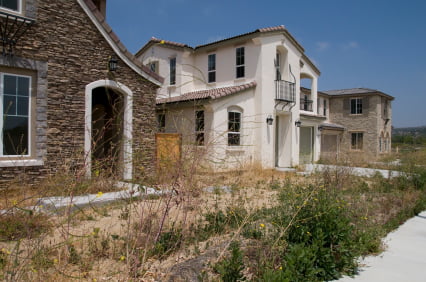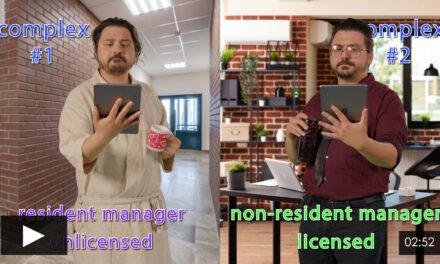Putting a face on foreclosure
The ethnic demographics of California borrowers in foreclosure are also radically out of balance. Latino borrowers make up 32% of the population 18 or older and 22% of the population of homeowners, yet comprise 48% of foreclosures in California.
Further, 54% of African American homebuyers and 47% of Latino homebuyers were charged higher interest rates on their mortgages for SFRs than non-Hispanic, Caucasian borrowers. The evidence suggests lenders targeted these borrowers for ARMs and steered them towards unacceptable loan terms without any economic justification for their actions. [For more information regarding lender discrimination, see the September 2010 first tuesday article, Who suffered the most in this California foreclosure crisis?]
Abusive lending is inevitable when lenders are left unchecked and real estate brokers steer their buyers towards quick and relaxed lending sources without exercising the full extent of their required due diligence. During the Millennium Boom, everyone — even the government — was intoxicated by the flourishing housing market, enhanced living standard and better paying jobs available to the under-skilled and less-educated work force. Homeowners were content to rely on their ability to refinance or resell to keep them in homes.
Now that Californians are confronted with the devastating consequences of a reckless housing boom, society is forced to reassess its blind ideological confidence in a real estate market that has, in California, time and again demonstrated its propensity to tank when improperly regulated. [For more information regarding economic ideology, see the October 2010 first tuesday article, Is homeownership a luxury or necessity?]
California’s non-judicial foreclosure policy
California is a non-judicial foreclosure state. In California, when a homeowner defaults on his mortgage, a Notice of Default (NOD) is recorded by the lender or the lender’s trustee and a copy is mailed to the homeowner.
Once the NOD is recorded, the lender must wait three months before advertising the sale of the property by auction, during which time the homeowner may cure the default. After the three-month period has expired, the lender records and posts a Notice of Trustee’s Sale (NOTS) setting the date of sale in no less than 21 days, and mails the homeowner a copy. The lender or lender’s trustee may then proceed to sell the property on that noticed sale’s date. The highest bidder at the sale is granted title by the lender or the lender’s trustee by recording a trustee’s deed. [California Civil Code §2924]
Thus, a mortgage lender’s decision to foreclose and “repossess” a property does not involve a judge to oversee the lender’s conduct. This non-judicial foreclosure process is quicker and less expensive than a judicial foreclosure, but the distressed homeowner is left without the protection of judicial review of a lender’s conduct and reason for foreclosing. Lenders, who almost always know more about the rights of homeowners than the homeowners themselves, leave no room for questions when recording an NOD, an NOTS or a trustee’s deed. Homeowners are left to trust the private system without oversight by an intermediary just as versed in mortgage foreclosure requirements as their lender and their lender’s trustee. What is missing from the non-judicial foreclosure process is accountability. To provide consumer protection for homeowners, the courts must get involved.
The coming reform of the real estate market
Foreclosure in itself is a necessity for a healthy capitalist economy. Defaulting homeowners must face the consequences for their non-payment and lenders must be able to resort to their security if they are not paid as agreed. A foreclosure crisis is a natural outcome of loose lending, job loss and recession. Moving forward, legislators have the opportunity to ensure future homeowners will be given prudent counsel by real estate brokers and their agents before acquiring a mortgage and lenders will be held accountable for their underwriting.
Even when the foreclosure rate returns to normal as economic recovery allows more homeowners to stay in their homes, the neighborhoods indirectly affected by foreclosures will remain stigmatized until memories fade. It is vital for legislators to increase community preservation efforts, particularly in California’s urban nuclei. Vacant REOs must be maintained and managed by lenders or local government entities in order to keep the rest of the neighborhood thriving. That duty can be legislated so neighborhoods can enlist local district attorneys (DAs) to step up and protect the community.
The Neighborhood Stabilization Program (NSP) is a federal aid program devoted to preserving neighborhoods hit hardest by foreclosures nationwide. $93 million has been invested in rehabilitating California neighborhoods, but the program is by no means adequate to address the plight of local communities. Increased funding and attention to this program by the California government is vital. [For more information regarding the Neighborhood Stabilization Program, see the California Department of Housing and Community Development.]
The government is slowly stepping in to increase consumer protection efforts and ensure future homebuyers they will be serviced by lenders held responsible for their paperwork. Under the Dodd-Frank Wall Street Reform and Consumer Protection Act, first-time homebuyers will be required to complete housing counseling before obtaining a mortgage. Mortgage loan brokers (MLBs) will no longer be permitted to collect yield spread premiums (YSPs), and will thus have no incentive for charging those less-informed, misdirected or ill-advised homebuyers a higher interest rate than is readily available to them in the market. [For more information regarding consumer protection legislation, see the October 2010 first tuesday Legislative Watch, TILA circa 2010; consumer protection enhancement; for more information regarding YSPs, see the October 2010 first tuesday article, How to make money as an endorsed, registered, law-abiding RESPA mortgage loan broker.]
Still, it is up to the gatekeepers of real estate — prudent agents and brokers with extensive experience — to guide homebuyers to a mortgage they can comfortably fit into their budget, now and into the distant future. Agents who are motivated by what they’ve learned in the Great Recession and who are correctly trained by their brokers will exercise due diligence in their duty to advocate for their clients. Homebuyers must be taught how to shop for a mortgage with the best rates and terms, and what impact a Fair Isaac Company (FICO) score has on their options. The consistent and conscientious performance of these duties will have the greatest impact on changing homebuyers’ ill-formed response to abusive lending. [For more information regarding mortgage shopping, see the December 2010 first tuesday article, Homebuyers shop around for everything but their mortgage and the May 2010 first tuesday article, Shop, shop, shop until you drop; for more information regarding the economic IQ of homebuyers, see the September 2010 first tuesday article, The era of the financially illiterate homebuyer; for more information regarding the FICO score, see the June 2010 first tuesday article, The FICO score delusion.]















Mae, we have a modular on foundation on our property. We had no problem getting financing through the last 20 years. We even got a 30 yr conv. loan no problem thru Countrywide, who was considered to be the strictest lender, and went on to get an equity loan from them on top of the 1st mtg. During the “boom” things tighened up when we wanted to refi to consolidate the loans. The only lender, unfortunately, was Chase who were funding these types of homes. We have been holding on to our home due to disability but not much longer as it took 2 1/2 yrs to get a modification done as my husband got hurt at work and is on disability (because of the games they play) at a fraction of his income. The promises made during the modification paper shuffle gave us false hope they were really trying to help. We have received 2 more modification offers with no details included. We won’t be suckered again. The “modification” lowered our payments by $100 some of which was my changing the house insurance deductible to lower it (we have impounds on this loan). The only thing that will keep us in our house is a principal reduction to the value of the house which would put us in the correct DTI ratio which the modification didn’t do. It is way over 50% front end even with the 2% “initial” interest rate. Can’t believe they are cutting their own throats by not giving in to principal reductions. If not that why not lease with option to buy with new values and loans to owners? The suggestion of renting to tenant is terrible. They can then throw you out in 3 months at the most. The greed of the people at the top is just plain gross. Seems to be a pyramid scheme to me. I thought those were illegal????? Anyway, I don’t think there is any help for us at the bottom of the triangle Mae. Unless you can save enough by the time you get foreclosed on, purchase another piece of property in forclosure and put a temp. trailer on it, then save again until you can put a modular on it. At least that way it will be yours and the greeds won’t be able to take it away. My question is, if the reasoning behind not being able to do principal reductions is because all the loans were mixed together and then split up and sold how can the lender do individual modifications let alone foreclosures on each property?? Too many lies and excuses from greedy people who hide behind “a corporation”. Best of luck to all who are lucky enough NOT to be a greed. I’m sure their time will come.
I made payments for 5 1/2 years on an 7 -year fixed adjustable, only to find out no one will give me a fixed rate loan today because the property has two home on it, one being a modular on a fixed foundation. The lenders won’t loan because Fannie Mae and Freddie Mac decided not to guarantee loans on modular homes. What’s a person to do like me except to let the property foreclose. It’s a horrible loss, but, I will never have one penny go toward my principal with the present loan and interest are going up and the interest rate will readjust at the end of the 7-year person. No lender will give a new borrower a loan because of the same reason and no one is going to pay cash for such an expensive piece of property. Lender will not reduce my principal which would be required, and reduce the interest rate, to make any sense to keep the loan going as it is. Any help out there?
I’m curious about employment as an agent. Is it going to be worth investing in becoming an agent?
This is an excellent recap of events. I am glad, that folks of your caliber with your widespread following have
brought this forward in a clear easy to understand format.
Heather R. Crist, GRI, SRES,
Great Article. When all this was happening, I questioned and asked many of my friends and even distant family members how they could logically go with such sub-prime loans. The consensus was, if could own a home wouldn’t you jump on it? I instantly thought “no” because the ARMs people were jumping on didn’t make sense, but said, “Yes, I guess.” But in the end, its the greed of the people in the lending industry at the time that got us into our current situation. Starting from the top to the bottom cold-callers that made promises of “home-ownership” and pushed the loans.
Anyone with half a brain knew the market would collapse with subprime loans, it was just a matter of time.
Unfortunately congress lacks common sense and believed the BS that lenders were racist and not lending in poor areas. The solution- loosen lending standards, just brilliant.
I don’t have to read the 500 page study that determined the cause of the subprime loan debacle and probably cost millions, just ask anyone in the lending business.
Surely this is just “Part 1” of a multi-installment piece? Good so far, but falls short of addressing the issues, as the subtitle states, “and proposes local and federal action to remedy widespread insolvency.”
I’d like to see this author follow through with some of these remedies…
On the upside, so far, it is a very good article…
Excellent article on the overall foreclosure status. It touched on most of the exact reasons that got our country in this foreclosure mess. The only thing that I might add is the culpability of Congress, along with their surrogate agents Fannie and Freddie. It started at the very top and cascaded on down the line with those wanting to cash in on the housing boom – before it inevitably went bust.